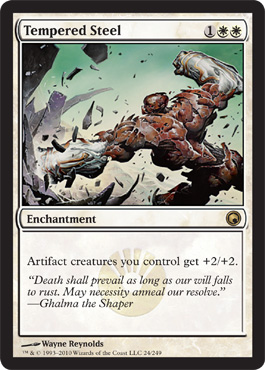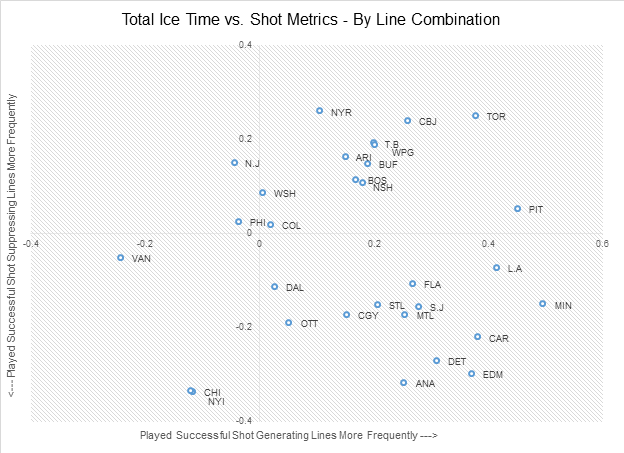Following the retirement of Rafalski and Lidstrom, Babcock recognized that he was going to need to protect his defensive corps. Heading into the 2012-2013 season, this was Mike Babcock's defensive group: [Niklas Kronwall, Ian White, Carlo Colaiacovo, Kyle Quincey, Jonathan Ericsson, Jakub Kindl, Brendan Smith, Brian Lashoff]
Given this relatively inexperienced group, Babcock elected to tighten up the Red Wings system by reducing the frequency of pinches by defensemen in the offensive zone, reducing the frequency of defensemen joining the rush, and by increasing the frequency in which the third forward stayed high in the offensive zone to prevent odd-man rushes. Going back to the graphs above, you'll see steady declines in 5v5 shot attempts against, scoring chances against, and high-danger chances against. However, you'll notice that the tradeoff was a significant decrease in offense. Granted, some of that is due to the loss of Rafalski and Lidstrom in successive years, but a large part of that is due to the systems changes made by Babcock.
Adjustments To The Forecheck
The first adjustment made by Babcock was to decrease the aggressiveness of the forecheck by playing his weak-side winger outside the blue line, almost in a soft "1-2-2" formation. [...] [The centre] forward is playing deeper to prevent a stretch pass or quick breakout pass on a team's motion or lane regroup. This is considered a "soft" 1-2-2 forecheck that provides strong neutral zone support to your defensemen. Essentially, the Wings are able to keep everyone in front of them defensively. This helps mask any potential weaknesses in skating for your defensemen by relying on sound positioning and strong skating from your forwards.
[The] Wings keep everybody in front of them and [the opponent] has to come through the neutral zone with little speed. This allows the Wings defensemen time to appropriately gauge [the opponents'] oncoming speed and adjust their skating accordingly. Ultimately, Babcock was able to hide many of the deficiencies of the Red Wings' defensemen by playing sound positional hockey.
The other thing to note [...] is how deep the defenseman is playing off of the oncoming forward. By playing off of the forward but ahead of the blue line, it gives the defenseman an added bit of space to turn and chase the puck if the forward elects to dump the puck in. Many teams like to have their defensemen press up on the forward receiving the puck to force a neutral zone turnover or force a tip-in to the offensive zone. However, Babcock preferred his defensemen to play a little off the high forward, giving his defenseman the opportunity to still force a turnover with his stick, but also have an extra bit of space if he needs to turn and chase a dump-in.
In conjunction with this, Babcock stressed having his third forward play high in the offensive zone. Below is an image depicting what that looks like.
This player is playing "high" in the offensive zone, meaning that he is not trapped down low where the puck is. Instead, he is hanging out higher in case the puck is recovered by the defensive (blue) team and they start a breakout. If the play moves in his direction (i.e. towards the near boards in the image above), he can leave his position and jump into the offensive play while the red "R" would drop back into third-man high position. Overall, this player is in better position defensively and slightly worse position offensively. However, Babcock preached this principle in order to limit the number of odd-man rushes his team faced.
Offensive Zone Pinches
To avoid creating races for the puck, Babcock also preached having his defensemen retreat rather than pinch and to only pinch if absolutely certain they could create a play. While some teams like to have their defensemen pinch up in the play to keep possession in the offensive zone, others prefer to have their defensemen retreat in order to prevent odd-man rushes. Babcock was a staunch proponent of the latter, especially over the past three years in Detroit. He was a proponent of this as it created less situations where his defensemen had to skate or be involved in a foot race. He was masking the deficiencies of his players.
[...]
By masking the deficiencies of his defensemen and forcing the Wings to play a more "low-event" system, Babcock watched his team progressively struggle to score goals.
[...]
After Babcock left for Toronto this past summer, new head coach Jeff Blashill stepped in and promised to activate his defense more in order to generate more consistent offense. Many fans were excited as they felt that Babcock's message was starting to fall on deaf ears. However, we can see from this graph and the graphs above, that Blashill's strategy switch has not paid dividends and has actually led to a significant increase in 5v5 high-danger scoring chances against and 5v5 scoring chances against. The Wings are giving up 10.6 5v5 high-danger scoring chances against per 60 minutes, the worst mark for a Red Wings team over the last nine seasons. Essentially, the activation of the defense and propensity to lose the third-man-high contain has unmasked the flaws of the Red Wings defense.
[...]
Is Blashill's system a bad one? No, not even close to it. The problem lies in the fact that the Red Wings personnel does not matchup with the coach's system. This is not a problem that only applies to Detroit. In fact, this problem applies to a large majority of the NHL and results in "bad" players playing more and "good" players playing less as a coach feels these players fit his system better. Babcock loved Luke Glendening because he was a defense-first player who was very concerned about his positioning. Blashill has gone that route at times because Glendening is not likely to give up his position as third-man high. It's quite possible that this is just an average roster and that within Blashill's system, he is not able to get as much out of them as Babcock.
Blashill's system is predicated on having mobile, high IQ defensemen in combination with positionally-sound forwards. The Wings have very few of these types of players, illustrating why this team has struggled to adapt to Blashill's system. I do believe that a coach is responsible for tinkering his system to match his personnel as Babcock has done for the past few years.


/cdn0.vox-cdn.com/uploads/chorus_asset/file/6166505/Screen_Shot_2016-03-09_at_10.01.48_AM.0.png)
/cdn0.vox-cdn.com/uploads/chorus_asset/file/6164347/Screen_Shot_2016-03-08_at_6.59.55_PM.0.png)
